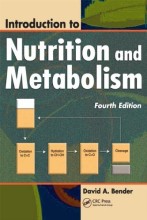NP13 Heat balance, body temperature, calorimetry
12 important questions on NP13 Heat balance, body temperature, calorimetry
Energy balance in humans; energy input, energy output
- Diet
energy output
- Heat
- Work
How/where do you gain heat from and heat loss?
- BMR
- Muscular activity
- Hormones
- Thermic effect of food
- Postural changes
- Environment
Heat loss
- Radiation
- Conduction
- Convection
- Evaporation
What is the drive of the heat balance: heat load of heat loss?
Compare environmental temp 20*C, 19*C, or 10*C
At 20
At 19
At 10 you will shiver
- Higher grades + faster learning
- Never study anything twice
- 100% sure, 100% understanding
How does the body release heat (via skin)
The body releases heat via radiation, conduction, convection and evaporation
- This is a physical mechanism, but skin temp is a physiological basis
- clearly, the capacity of these processes to release heat is related to the environmental temperature
In what ways do pigs loss body heat ranging from 5 to 35 *C
- radiation and convention are large,
- evaporation and conduction are low/the same
at 35 *C
- evaporation is mostly the heat loss
- little of convection, radiation and conduction
What are the consequences for young vs. Adults with respect to their ability to maintain their body temperature?
What behaviour is related to this ratio?
Constantly moving, to stay warm
How to establish the level of heat production (kJ/day or kJ/min)
- Brody (maintenance) H(kJ/day) = 400 * W^0.75
- Harris Benedict BMR; weight, length, age, gender
Measurements
- direct calorimetry heat produced
- indirect calorimeter H (kJ/day) = 16 O2 + 5 CO2
- 1 liter O2 = 20 kJ, 1 liter CO2 = 25 kJ
What is the kJ/g for carbohydrate, protein and fat?
protein 18.4
fat 39.8
Heat production (kJ): 16.18 O2 + 5.02 CO2 - 5.99 Nurine
Humans
- 500 liter O2
- 400 liter CO2
- 100 gram porties (16 grams N)
Calculate the ME that is utilised by the body from its: O2 consumption and CO2 production
--> protein contribution is only ca. 1%
Heat (kJ) = 16 O2 + 4 O2 ± 20 x O2 (L)
(in)direct calorimetry
- Both methods can give different results, why?
- What is measured by direct calorimetry? -->
- What is measured by indirect calorimetry? -->
- What can be the difference?
What is measured by direct calorimetry?
- Heat
- O2 and CO2
Measurement of energy expenditure can besides looking at O2 and CO2 also be done by ...
Look at the difference between the lines
It is very expencive
How fast do we run into problems? (fever)
- Calculate the time needed to raise the body temperature from 37 to 40 *C
- Assume
- complete insulation of the body ( 70kg)
- maintenance heat production (7kJ/min)
- Heat capacity ??? (kJ/kg *C)
- Athletes stop exercising at a core temperature of ±40.1 *C
- complete insulation of the body ( 70kg)
- maintenance heat production (7kJ/min)
- Heat capacity ??? (kJ/kg *C)
- Athletes stop exercising at a core temperature of ±40.1 *C
(3.5 kJ * 70) * 3 = 750
metabolic rate: 7 kJ/min --> 100min
marathon: 10-12 MJ; 80 kJ/min --> 10 min
solar radiation: 1000 W/m2; 17 kJ/min M2 --> 45 min
The question on the page originate from the summary of the following study material:
- A unique study and practice tool
- Never study anything twice again
- Get the grades you hope for
- 100% sure, 100% understanding
































